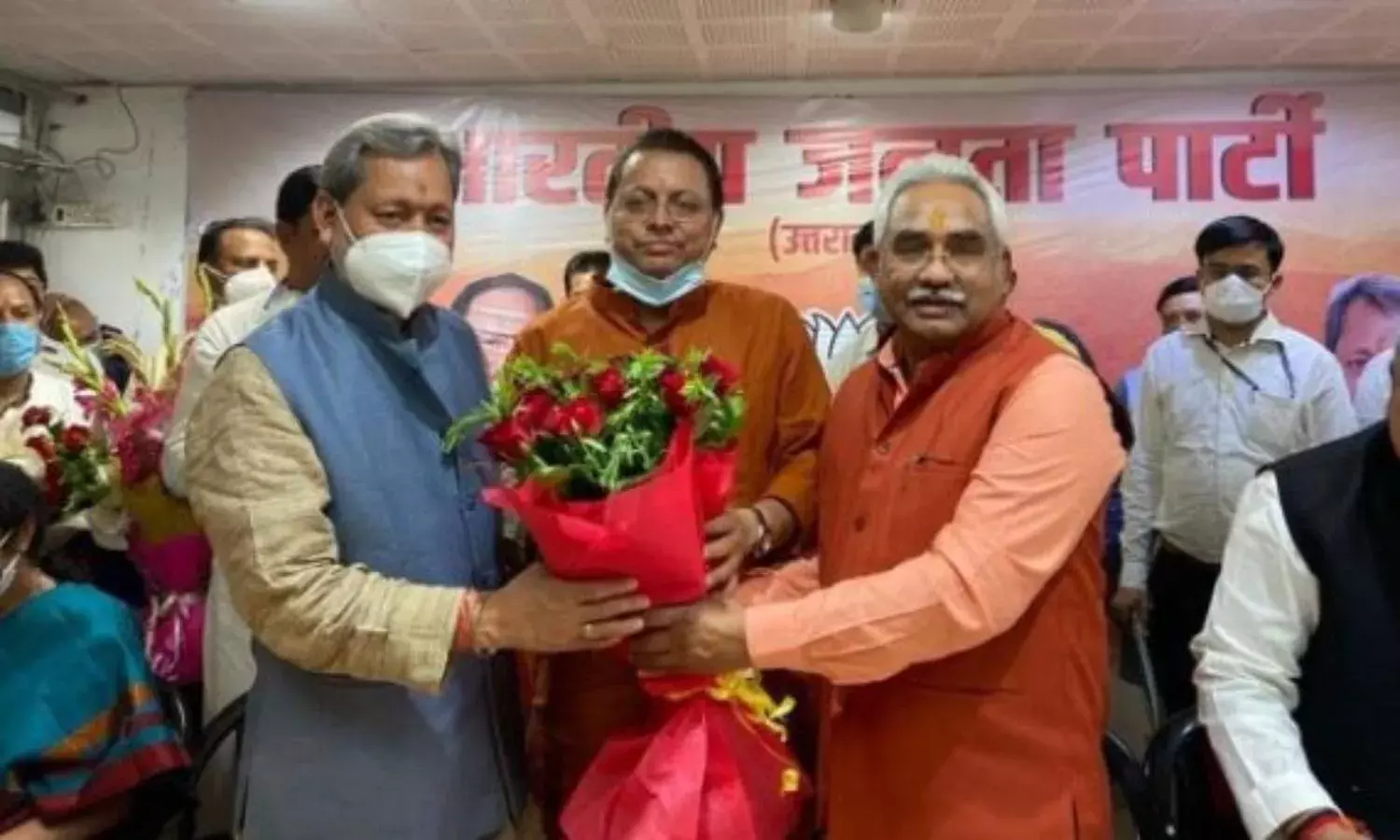CM's Become Skittles in Uttarakhand, Why?
Dhami Replaces Rawat

Pushkar Singh Dhami is the new rabbit the Bharatiya Janata Party (BJP) has pulled out of the hat to anoint as the new chief minister of Uttarakhand barely eight months ahead of the state assembly polls.
He replaces Tirath Singh Rawat who was in office for less than four months after taking over from Trivendra Singh Rawat. Dhami will be the third BJP chief minister in the last four and a half years after the party came to power in 2017 with a thumping majority.
It is also a repeat of history for the BJP that had brought back Major General (Retired) Bhuwan Chandra Khanduri in 2011 to replace Ramesh Pokhariyal Nishank some months ahead of the assembly polls. Having been made the chief minister after the party’s victory in 2007, Khanduri had quit the post following the 2009 Lok Sabha debacle where the BJP had lost all five seats.
But before one delves into the political history of one of the youngest states of the Indian Union, it is essential to understand why Uttarakhand has been witnessing a frequent change in the chief ministers, no matter which party has been in power.
Barring Congress heavyweight Narayan Datt Tewari who was also a union minister and a chief minister of undivided Uttar Pradesh, no other person in this post has completed a full term in office.
Dhami is the 10th person to sit on the chair of the chief minister of this primarily hill state and it will be the 11th change for the post if the return of Khanduri a decade back is counted.
The second term of the Congress party too had seen a change of chief ministerial candidate midway when Harish Rawat had replaced Vijay Bahuguna.
Political observer Jay Singh Rawat who has been documenting the political developments in Uttarakhand in detail right from the days of the agitation for the establishment of a hill state told The Citizen, “ there has been too much of interference in the affairs of the state government by the BJP and the Congress respectively, much to the chagrin of the common people.”
His point stands vindicated if one just scrolls through the social media and reads the way common people have reacted to the developments pouring scorn over the politicians from the state, majority of whom have been reduced to a laughing stock.
“The central leaderships in both the BJP and the Congress have not wanted and allowed their chief ministerial candidates to survive. If one studies the behavior of the politicians of the state, the majority of them are over ambitious and do not refrain from resorting to opportunism. Look at the way the senior Congress leadership including former Chief Minister Vijay Bahuguna and other heavyweights like Sat Pal Maharaj and Harak Singh Rawat had jumped onto the BJP bandwagon ahead of the last assembly polls,” Rawat said.
Another senior political observer SMA Kazmi who has been documenting the state’s history right from its birth said, “Both Nishank and Bhagat Singh Koshiyari who eventually became chief ministers had refused to take oath as ministers at the ceremony where the first Chief Minister Nityanand Swami and his cabinet were sworn in. They had to be inducted later.”
Jay Singh Rawat goes on to emphasise, “The biggest tragedy is that the chief ministers are not elected by the MLAs but appointed by the party’s central leadership. They are in fact imposed on the legislature and hence the people of the state.”
Political observers and analysts take the debate further by pointing at the multiple ‘fault lines’ in the state polity that have resulted in the frequent change of the chief ministers. There are regional divisions in the name of Garhwal and Kumaon regions. There are topographical divisions in the name of hills and plains. There are caste divisions in the name of Thakurs and Brahmins. All this has often resulted in a headache for the central leaderships of the parties who are compelled to walk the tightrope to strike various balances.
The same is being said about Dhami who is the new face of BJP in the state. With both Trivendra and Tirath coming from Garhwal, Dhami is a candidate from Khatima constituency of Kumaon with his roots in Pithoragarh in the region. Many believe that this articulate 45-year-old who is said to be close to Koshiyari and Defence Minister Rajnath Singh can be a counter to Congress heavyweight Harish Rawat who comes from the same region.
They also point towards MLAS with very little political ‘acumen and experience’ turning out to be too demanding when their party is elected to power making things difficult for the chief minister in the chair. Majority of the MLAs have been small time leaders who suddenly became legislators with the new state evolving gradually.



